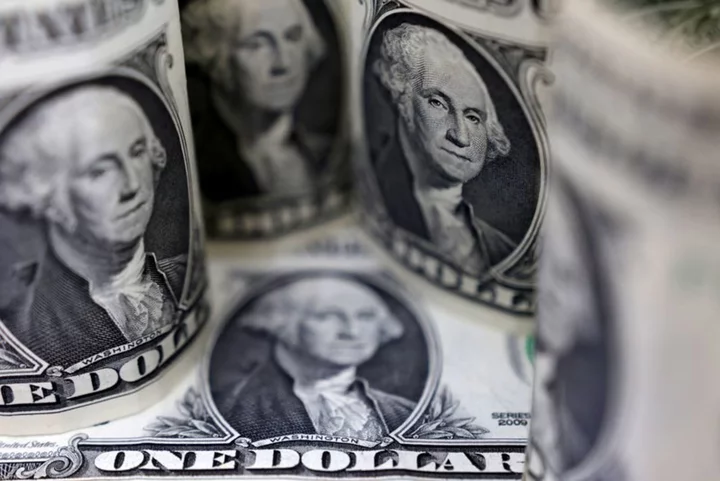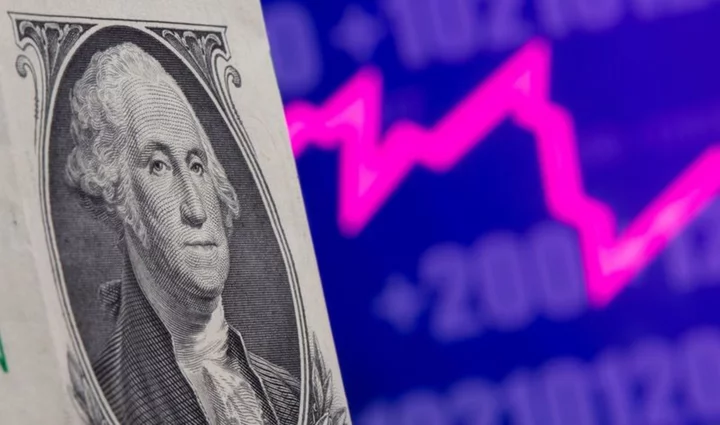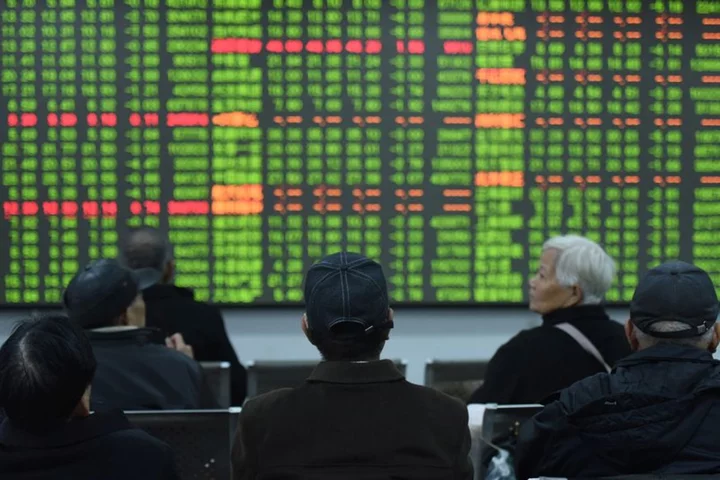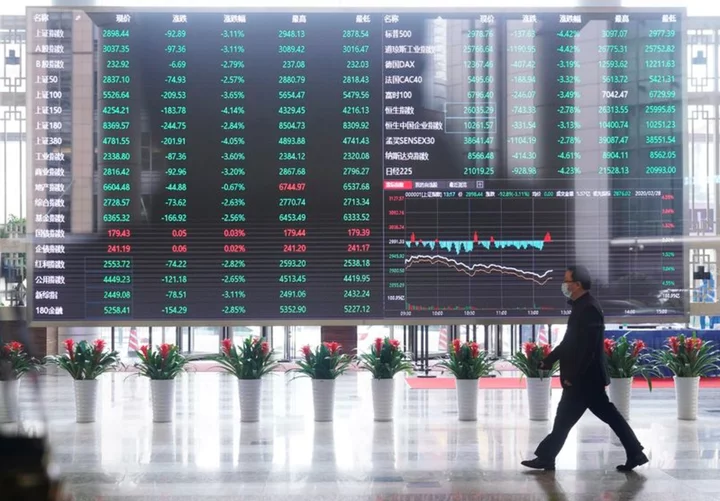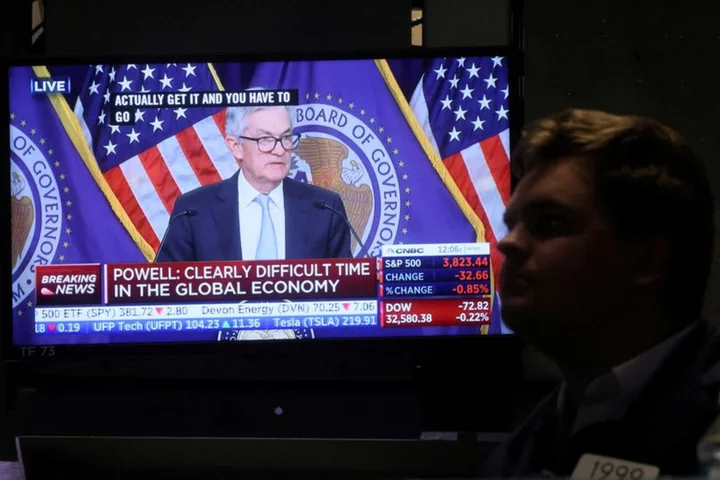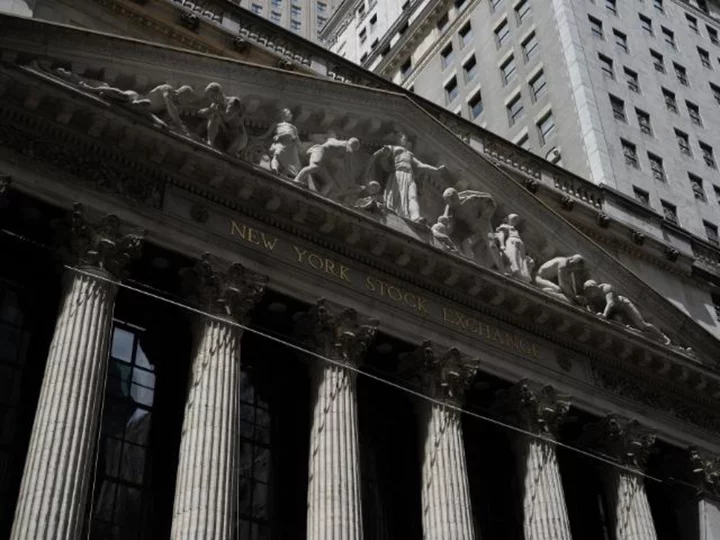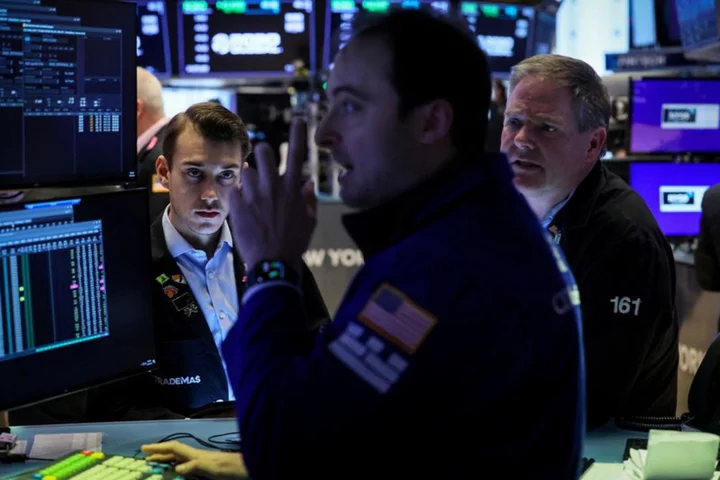By Jamie McGeever
ORLANDO, Florida If Federal Reserve officials want U.S. financial conditions to tighten enough to cool the economy and inflation without triggering a deep recession, they're getting a strong helping hand right now from the dollar.
The dollar is at a six-month high and has surged 5.5% since mid-July. That rip higher has been fueled by a rise in U.S. bond yields that has made the dollar much more appealing relative to other currencies.
Since the dollar index hit a 15-month low and embarked on its current upswing on July 14, Goldman Sachs' U.S. financial conditions index has risen 52 basis points.
The trade-weighted FX rate has been the biggest single component of that, accounting for 22 bps, even more than the 21 bps contribution from the jump in long rates which has probably grabbed more media and market attention.
It is a small sample size, but the exchange rate is becoming an increasingly important factor tightening U.S. financial conditions.
The Fed will probably welcome this from a macro level, although there is a debate to be had about how much a stronger exchange rate can cool inflation that is largely domestically generated in services and housing.
But continued dollar appreciation could tighten financial conditions further without the Fed having to raise rates again.
The dollar's momentum seems justified - U.S. economic data refuses to roll over, the rest of the world appears more fragile than the U.S., the dollar's rate and yield advantage remains wide, and market positioning is still underweight.
Against that backdrop, HSBC's currency strategy team on Thursday flipped their dollar view, and now see it marching even higher.
"The dollar has been making a comeback lately but we see more upside ahead. We change our view and now see the dollar strengthening into 2024," they wrote.
HSBC JOINS DOLLAR BULLS
In the near term, speculative positioning is still weighted against the dollar despite the recent shakeout, which means hedge funds have room to cut back their bearish dollar bets even more in the coming weeks.
The last Commodity Futures Trading Commission data show that speculators halved their net short dollar position to $10.9 billion from $21.3 billion in late July. The last time they held a net long dollar position was November.
In periods of sustained dollar strength when the Fed is raising interest rates, the exchange rate's contribution to tightening U.S. financial conditions is small. But when the dollar is rallying and rates are not rising, its impact is much greater.
In the January-September period last year when the dollar appreciated more than 20% - and the Fed was jacking up interest rates in clips of 75 basis points - Goldman's U.S. financial conditions index rose around 350 bps.
The trade-weighted FX rate only accounted for around 65 bps of that, less than a quarter of the total and behind rising long rates and falling equities in terms of overall impact.
Of course, the stronger dollar would have fed into the bearish equity narrative as a higher exchange rate shrinks profits accrued from operations overseas.
Conversely, Goldman's FC rose 90 bps between July 2014 and March 2015, a period in which the dollar appreciated 25% while interest rates remained anchored at the zero lower bound. The dollar accounted for all of the tightening conditions.
The Holy Grail for Fed Chair Jerome Powell and his Federal Open Market Committee colleagues is inflation returning smoothly to target and the economy achieving a 'soft landing'.
Luck will determine that as much as sound wisdom and good judgment. The full impact of the 525 bps of policy tightening since March last year has probably not been felt although debate continues to swirl around how 'long and variable' the lags are.
Fed economists in June launched a financial conditions index called "FCI-G" - Financial Conditions Impulse on Growth - aimed at measuring the impact of conditions on activity and growth.
Over the second half of last year and into this year, the dollar has turned to being a headwind to growth from a tailwind, the authors found. The Fed will be comfortable with that continuing, as long as it doesn't morph into a storm or worse.
(The opinions expressed here are those of the author, a columnist for Reuters)
(Reporting by Jamie McGeever; Editing by Andrea Ricci)

